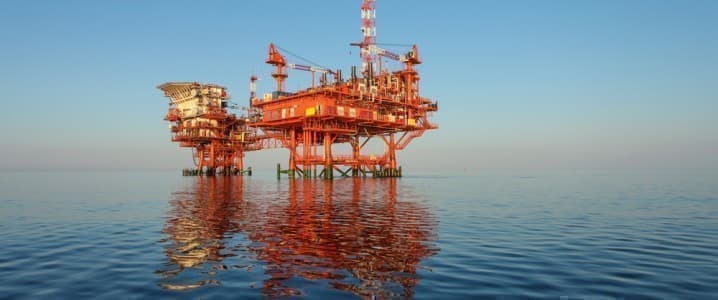Russia seems to be going through a tumultuous period. Internally, the Putin Administration has been kept busy with a wave of dissent, externally it is struggling to regain its geopolitical mojo as most of its international efforts are focused on overcoming the COVID pandemic. Amidst all of this, Russian oil and gas companies a striving to keep operations as close to normal as possible, despite the mandatory participation in OPEC+ production curtailments and hefty CAPEX cuts. Normal operations would involve Russian majors investing in projects abroad in order to diversify their production base, but the post-Crimean landscape has seen relatively few deals of this kind. The one notable exception to that rule is Africa, a continent to which many Russian majors are now turning, attracted by vast untapped reserves and negotiable upstream terms.
Attentive readers of Oilprice.com might perhaps remember the story of Russia’s LUKOIL attempting to get into Senegal’s offshore. The Moscow-based firm stated in June 2020 that it would buy Cairn Energy’s 40% stake in the Rufisque-Sangomar-Sangomar Deep (RSSD) project for $400 million. The final investment decision on RSSD was taken in January 2020 and production was slated to start in 2023. As of today, the 2200km2 block contains two commercial fields – FAN and Sangomar – totaling 500 MMbbls, and there is ample potential to see that reserve tally edge even higher. The RSSD fields are predicted to ramp up to 100kbpd at plateau production, allocated between the project stakeholders on the basis of a production sharing agreement (the other participants were Woodside, with 35%, FAR, with 15%, and the Senegalese NOC Petrosen, with a 10% stake).
Just as it seemed that Senegal would have its first Russian entry, Woodside exercised its right to buy out Cairn Energy’s stake with bid that matched LUKOIL. Having received all necessary government approvals and approval from Cairn’s shareholders, Woodside closed the acquisition in late December, increasing its overall ownership to 68% for Sangomar and 75% for the other two blocks. Just as Woodside bought out Cairn’s stake, its other project partner, FAR, announced its intent to sell its 15% stake. This time, the first bidder was not LUKOIL but the Indian national oil company ONGC, compelling Woodside to once again attempt to pre-empt the deal with its own offer.
Related Video: Fukushima's Radioactive Wastewater Disaster
It is against this background that LUKOIL decided to strike again by putting forward a non-binding takeover for FAR’s share in the RSSD project, offering a 2.2 cents per share cash offer (which translates into A$220 million in aggregate, equivalent to $170 million in USD) literally a day before FAR shareholders were about to vote on Woodside’s preempting offer. According to media reports, FAR is already in default on cash payments as it struggles to cover its share of construction costs on Sangomar and would be open to assessing LUKOIL’s bid, which is doubly interesting as the Russian firm will reportedly provide some sort of financing support to the Australian independent. LUKOIL has also bid nearly four times more than Woodside ($45 million).
The peculiarity of LUKOIL’s takeover offer is that it does not trigger pre-emptive rights from Woodside as the Russian firm is bidding for FAR’s shares in general and not specifically for its participation in RSSD. Considering that LUKOIL would not own more than 33% of the project, its acquisition bid does not even fall under U.S. sanctions – a crucial deficiency of LUKOIL’s previous attempt to buy Cairn Energy’s part in the project (40%). But that isn’t the end of it. Should LUKOIL’s bid be accepted, the Russian company could use the same pre-emptive rights to buy up to 33% of the project, which is an interesting development considering Woodside’s reported intent to sell some 20-25% of its shares in Sangomar.

To further boost their foothold in West Africa, Russian companies might avail themselves of the opportunities presented by conventional licensing. Senegal has postponed the deadline of its 2020 bid round to May 31, 2021, marking the third time that the licensing round was moved due to COVID-19 difficulties. The bid round comprises 12 blocks – of them, 10 are located in ultra-deepwater, 1 is in deep-water, and 1 in shallow waters. Up until now, all Senegalese offshore discoveries were within 100 km of the Dakar peninsula. Not only that, according to IHS Markit, the new upstream terms instituted in 2019 put the ultra-deepwater government take at 73%, marking a sizeable increase from their previous level of 53% under the 1998 petroleum code.
It would be a stretch to call any of the license blocks on offer flanking the Sangomar discoveries, the geographically closest would be Offshore Ultra Profond Nord 6 which lies in significantly deeper waters than most of RSSD (1100-1300 meters). For those wary of ultra-deepwater risks in a largely unappraised albeit very promising oil frontier, there is always the option of conducting direct negotiations on available open blocks. Although most of the available open acreage is located onshore (amongst them the monster block that is Senegal Est, totaling almost 119 000km2, i.e. more than 60% of the country’s territory), there still remain some interesting blocks.
By Viktor Katona for Oilprice.com
More Top Reads From Oilprice.com:
- How Oil Could Go To $100 Per Barrel
- Biden’s Policies Unlikely To Cause Crash In U.S. Oil Production
- Oil Prices Move Higher Despite Another Major Crude Build


















